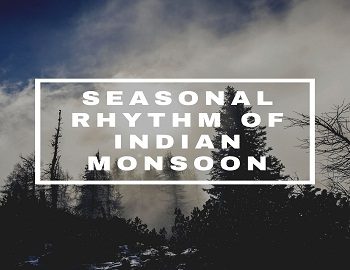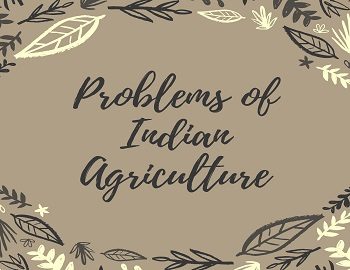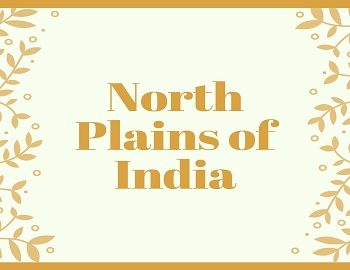Table of Contents
Seasonal Rhythm Of Indian Monsoon:

Indian meteorological department has recognized the following four distinct seasons-
- Cold Weather Season or Winter Season.
- Hot Weather Season or Summer Season.
- South-West Monsoon Season or Rainy Season.
- Cool Season or Retreating Monsoon Season.
Cold Weather Season:
Starts from 15th December to 15th March. During this season sun is over the tropic of Capricorn and is characterized by high-pressure conditions over the north Indian plains. The northern parts of the country have a mean temperature below 21°C and January is the coldest month. The most important weather condition of this season is the western disturbance which provides rainfall and snowfall to northern parts of the country which decreases from the west towards the east and from the north towards the south.
Western Disturbance:
These are the low-pressure system or temperate cyclones originating over the Mediterranean Sea. These disturbances are stirred or pushed towards the Indian sub-continent by sub-tropical westerly jet stream blowing close to the tropopause. These disturbances on way towards the Indian subcontinent picks up moisture from the Red Sea, Black Sea, and the Caspian Sea. On reaching the Indian sub-continent these are obstructed by the Himalayas and are responsible for orographic rainfall or frontal rainfall in northern parts of India including states of J&K, Himachal, Punjab, Harayana, Delhi, Uttarakhand, Uttar Pradesh, etc. The amount of rainfall decreases from the west towards the east and from the north towards the south.
Hot Weather Season:
Temporarily this season is confined between 15th March to 15th June and is also called pre-monsoonal Season. This season is characterized by high temperature and low humidity. The northern and central parts of India experience heatwaves and are characterized by low pressure which attracts moisture-laden winds from the Arabian Sea and the Bay of Bengal towards the Indian sub-continent on a local or regional scale. These winds cause some precipitation and are called pre-monsoonal showers which are named differently in different parts of India. For example-
- Mango Showers– Kerala and coastal area of Karnataka.
- Cherry Blossom– Karnatka.
- Tea Shower– Assam.
- Norwesters– These are dreaded evening thunderstorms in northern parts of West Bengal and adjoining Assam. Their notorious nature can be understood from the local nomenclature of ‘Kalbaisakhi‘, a calamity of the month of Baisakh. These showers are useful for tea, jute, and rice cultivation. In Assam, these storms are known as ‘Bardoli Chheerha‘.
Another important weather condition of this season is the blowing of hot waves in the northern plains from the Thar Desert and are called as Loo.
Another important feature is the formation of a local low-pressure system in the northern plain of India especially Uttar Pradesh which leads to high-velocity winds and some rainfall which gives respite from the scorching heat from summers and are called as Aandhis.
South-West Monsoon Season:
Temporarily it is confined between 15th June to 15th September and is also called as monsoon season or simple hot-wet season. This season starts with the advent of south-west monsoonal winds which nearly hits the south Indian coast on June 1. This season is characterized by high humidity, high heat, and extensive clouding, and several spells of moderate to heavy rainfall with strong surface winds. Nearly 3/4th of the total rainfall of the country is seen during this season. South-west monsoon after heating the southern part of India is bifurcated into two branches-
- Arabian Sea.
- Bay of Bengal.
Arabian Sea:
It is larger and more powerful because of the bigger expansion of the Arabian Sea. As the Arabian Sea branch moves northward along the western coast of India it is able to penetrate much deeper into Peninsular India and Central India as the altitude of Western Ghat is much less. As these winds move inward rainfall decreases either eastward or northward.
Bay of Bengal:
A major part of it goes towards south-east Asia because of no significant barrier whereas a small part of it turns northward because of obstruction posed by Arkanyoma mountain of Myanmar. This branch is responsible for rainfall in Northeastern states of India then it turns westward along the foot of Shivaliks and is responsible for precipitation over the great plains of Northern India. This branch has the distinction of providing the world’s wettest place namely Mawsynram in Khasi Hills in Meghalaya.
These two branches meet at Punjab around mid of July.
Retreating Monsoon Season:
This season stretches between 15th September to 15th December. This season starts with the beginning of the withdrawal of South-west monsoon from Indian sub-continents which continues up to the Southern hemisphere with the retreat of monsoon clouds disappear and the sky becomes clear. The most important weather condition of this season is the rainfall over the coromandel coast caused by these retreating monsoon. Retreat monsoon fixes up some moisture from the Bay of Bengal and is encountered by the coromandel coast so here we get orographic rainfall caused by Eastern ghat and the southern hill complex.
Another important weather condition of this season is October heat. It relates to the warm oppressive condition of Northern plain as per the development of water locked condition due to successful south-western monsoon.








Comments (No)